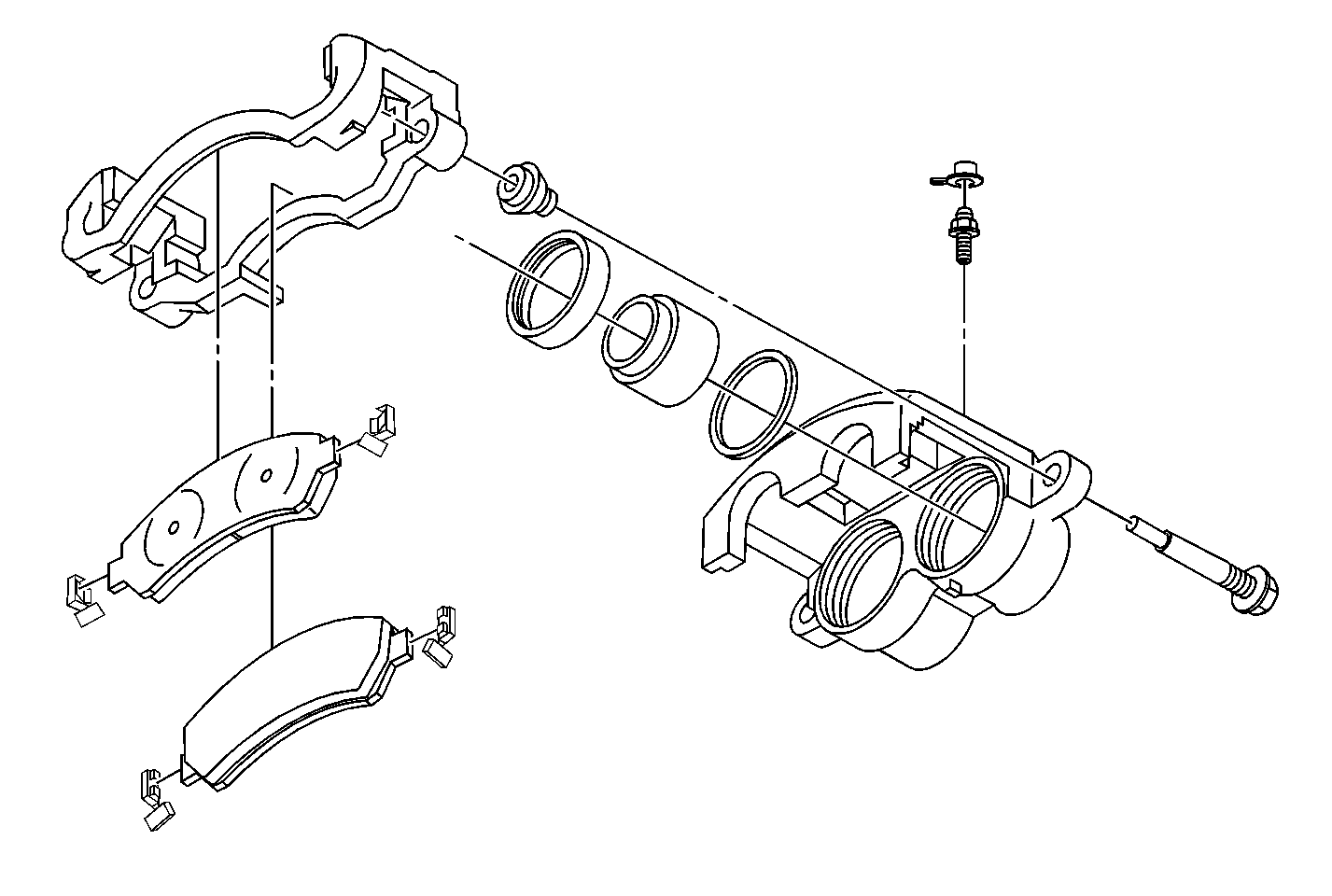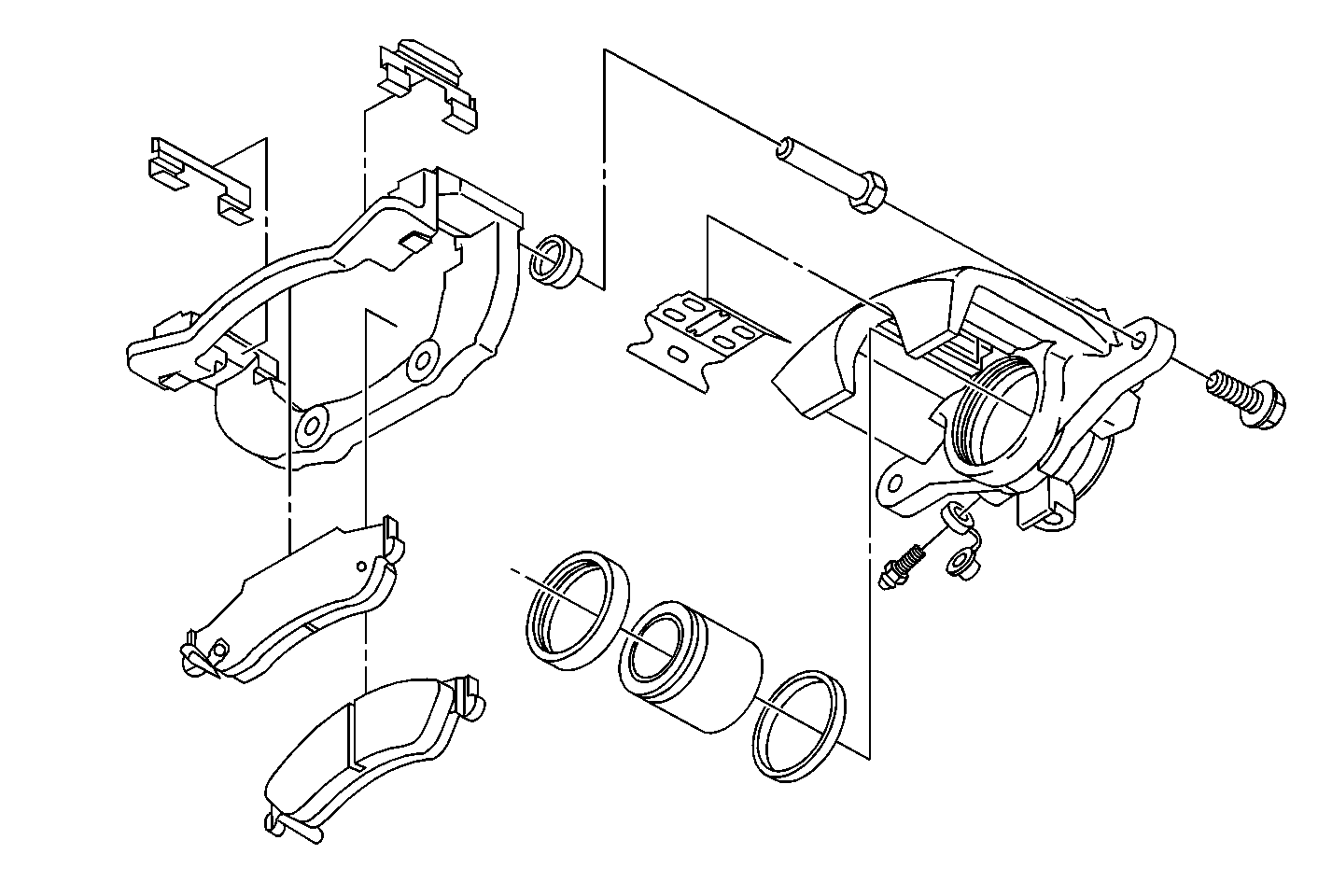Single Piston Front Caliper

The front disc brake assembly
consists of a caliper assembly, the rotor, and the lining assemblies mounted
on the steering knuckle.
Applying the brake pedal causes the hydraulic pressure that moves the
caliper piston. The piston then forces the inboard brake lining assembly against
the inboard braking surface of the rotor. Increasing the force against
the rotor causes the caliper assembly to move inboard. The outer brake
lining assembly then contacts the outboard braking surface of the rotor.
The force of the two lining assemblies provides the desired clamping
action on the rotor.
Releasing the brake pedal relieves the pressure applied on the piston.
The square cut seal on the piston relaxes and the seal allows a running clearance
between the brake lining assemblies and the rotor.
Dual Piston Caliper

The front brake caliper
has a single or a dual piston. The single piston caliper is used only on RWD
pickups. The dual piston caliper is used on RWD Utilities and all 4WD
vehicles. Two mounting bolts hold the caliper in place. The caliper is
mounted on the steering knuckle. The caliper moves laterally on the
steering knuckle when the brakes are applied. The caliper is a one-piece
casting with the piston bore(s) in the inboard side. A square-cut rubber
seal fits in a groove in each piston bore. The square-cut rubber seal
provides a hydraulic seal between the piston and the caliper bore.
The front disc brakes use a combination rotor and hub assembly. The
rotor and hub are combined on RWD pickups. The rotor is separate from the
hub on RWD Utilities, and all 4WD vehicles.
The rotor turns freely between the linings, until the caliper forces
the linings against the rotor. The vented area between the rotor braking surfaces
allows for efficient heat dissipation.
Rear Disc Caliper

The rear brake caliper
housing has a single bore. The caliper mounts to the anchor bracket with
two guide pin bolts. Fluid pressure behind the caliper piston increases
when applying the brakes. Pressure exerts equally against the bottom
of the piston and the bottom of the piston bores. The pressure that
applies to the piston transmits to the inner pad. The pressure forces
the pad against the inner rotor surface. The pressure that applies to
the bottom of the piston bores forces the caliper to slide on the mounting
bolts. The caliper slides to the center of the vehicle. Because the
caliper is one piece, the sliding movement causes the outer section
of the caliper to apply pressure against the back of the outer pad. The
pressure then forces the pad against the outer rotor surface. As line
pressure builds, the pads press against the rotor surfaces with increased
force. The force brings the vehicle to a stop. When releasing the brake
pedal, the line pressure releases. The seal and the seal groove cause
the piston to retract slightly. Piston retraction causes less drag on
the rotor by both pads. Outward movement of the piston and inward movement
of the caliper automatically compensate for pad wear. As the pads wear,
the increased area behind the piston fills with brake fluid from the
master cylinder reservoir.
The park brake is completely independent of the hydraulic braking system.
For more information on the park brake, refer to
System Description
in Park Brake.
Servicing Information
| • | Replace all components included in the repair kits. |
| • | Lubricate the parts as specified. |
| • | Do not use lubricated shop air on the brake parts. Shop air can
damage the rubber components. |
| • | If necessary, bleed all or part of the brake system after any
hydraulic component has been removed or disconnected. |
| • | Replace brake pads in axle sets only. |
| • | The torques specified are for dry, unlubricated fasteners. |
| • | Perform service operations on a clean bench. Verify that the bench
is free from mineral oil and other contaminants. |
| • | Use extreme care when doing any work around antilock components
in order to prevent damage or misalignment. |
| • | Pump the brake pedal several times in order to make sure it is
firm prior to moving the vehicle. Do not move the vehicle until a firm pedal
has been obtained. Check the brake fluid level in the master cylinder after
pumping the brakes. |



